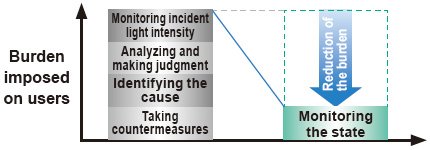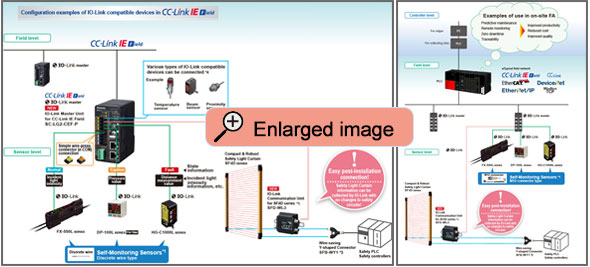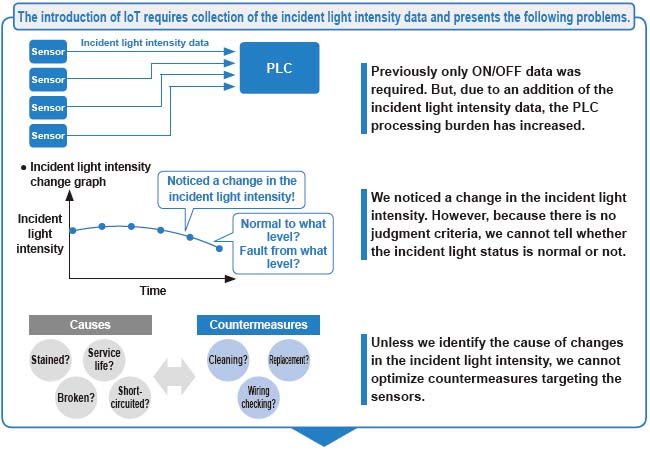[System Maintenance Notice]
Due to ongoing system maintenance, the site search and specification search functions are temporarily unavailable. We apologize for any inconvenience this may cause and appreciate your understanding.
【Notification of Manufacturer Change for Panasonic Industrial Devices SUNX Products and Panasonic Industrial Devices SUNX Tatsuno Products】
From April 1, 2024, the terms "Panasonic Industrial Devices SUNX Co., Ltd." and "Panasonic Industrial Devices SUNX Tatsuno Co., Ltd."
in this page and in the manuals and other documents to be downloaded will all be replaced with "Panasonic Industry Co., Ltd." and applied accordingly.
 Business
> Industrial Devices
> Automation Controls Top
> FA Sensors & Components
> Sensors
> Photoelectric Sensors / Laser Sensors
> CMOS Type Micro Laser Distance Sensor HG-C1000L
Business
> Industrial Devices
> Automation Controls Top
> FA Sensors & Components
> Sensors
> Photoelectric Sensors / Laser Sensors
> CMOS Type Micro Laser Distance Sensor HG-C1000L
CMOS Type Micro Laser Distance Sensor HG-C1000L
|
Features
Reduction of the data analysis burdenone small step towards IoT.
IO-Link compatible Collecting sensor level data
Field data collected and accumulated for “preventive maintenance” and “operation monitoring”.
An analysis of such field data requires high-level know-how and time, causing a burden to people
responsible for the production site management.
The Self-Monitoring Sensor manufactured by Panasonic is capable of reporting sensor data and its own state to the host device through the I/O Link master.
With the Self-Monitoring Sensor, you can immediately judge the state of the sensor and easily identify the cause of failure. Thus, this sensor contributes to the reduction of the burden experienced by the client in collecting and analyzing data.
Incorporated self-monitoring function
With the Panasonic's Self-Monitoring Sensor,you can get high-level solutions!
|
Problems are solved by the Self-monitoring function.
| Status | Judgement of the state | ||
|---|---|---|---|
| Normal | Operation is normal. | ||
| Notification | Check the settings. Detected state is faulty. |
* Recover to the normal state through checking installation and settings. Reduction in the incident light intensity |
|
| Caution | Getting close to the end of service life. Reached the state where the device should be replaced. |
* Limitation in the writing frequency into the memory or in the operation hours, etc. | |
| Fault | Short-circuited or broken. Reached the state where it is impossible to control as a device. |
* Short-circuited output, damaged EEPROM, etc. | |
| * | By creating a program with a PLC, etc., the "State" of the self-monitoring sensor can be grasped. |
|---|
Software are available for download.
*Membership registration is required to access/download this data.
>>Go to Data download.
Easy use of IoT

|
“Predictive maintenance” can be easily achieved through monitoring the state of the Self-Monitoring Sensor. |
|
<Compact>
The smallest CMOS laser sensor in the industry*
*Based on research conducted by our company as of July 2022
|
A new optical system with a built-in mirror |
 |
|
An aluminum die-cast casing protects from strain and heat |
 |
<Overwhelmingly stable>
Precise measurements on the order of 1/100 mm 0.0003 inch*
* HG-C1030□
|
Useful functions
Teaching & window comparator mode
Normal sensing mode
[2-Point teaching]
Basic teaching method
|
[Limit teaching]
Useful teaching method for when there is a very small object or background object.
|
|
Window comparator mode
With an object below the sensor, press the TEACH key to set the valid range for distances via threshold values. There are 3 methods for setting the valid range: 1-point, 2-point, and 3-point teaching.
 |
|
 |
|
 |
|
Rising differential mode / Trailing differential mode
Use this mode to cancel gradual changes in the measured value and to detect only sudden changes. For the setting of threshold value, use the threshold value fine adjustment function.
Timer setting function
The time mode options are “off-delay timer,” “on-delay timer,” “one-shot timer” and “no timer.” The counting time is fixed to 5 ms.
 |
Off-delay timer |
|
|
Peak and bottom hold functions
The peak hold function holds the maximum measured value which is output and displayed.
The bottom hold function holds the minimum measured value which is output and displayed.
* The peak hold function and the bottom hold function cannot be set at the same time.
* When the zero set function is executed while the peak hold function or the bottom hold function is valid, the held measurement value is reset.
Threshold value fine adjustment function
Fine adjustment of threshold values can be performed while measurement is proceeding on the display, and even after teaching.
Key lock function
This function protects setting conditions from unintentional changes.
* For other functions and procedures for setting the functions, see“PRO Mode Setting”.
BY EMAIL
Requests to customers (Automation Control Components & Industrial Device) [Excluding specific product]
Requests to customers (Automation Control Components & Industrial Device) [For specific product]
Requests to customers (FA Sensors & Components [Excluding motors])
Requests to customers (Dedicated to industrial motors)
- COMPONENTS & DEVICES
- FA SENSORS & COMPONENTS
- Fiber Sensors
- Photoelectric Sensors / Laser Sensors
- Micro Photoelectric Sensors
- Light Curtains / Safety Components
- Area Sensors
- Inductive Proximity Sensors
- Particular Use Sensors
- Sensor Options
- Wire-Saving Systems
- Programmable Controllers / Interface Terminal
- Human Machine Interface
- Pressure Sensors / Flow Sensors
- Measurement Sensors
- Static Control Devices
- Laser Markers / 2D Code Readers
- Machine Vision System
- Energy Management Solutions
- Timers / Counters / FA Components
- MOTORS























